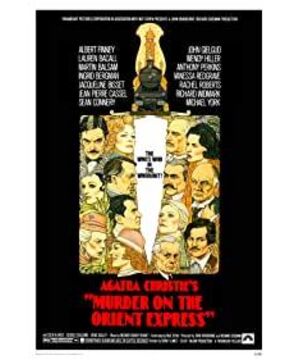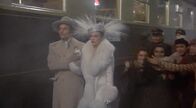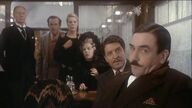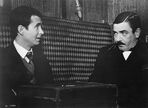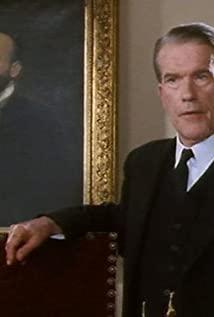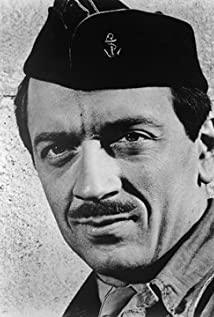—— Brief introduction of the case In the
twilight, Istanbul passengers with different identities and backgrounds boarded the Orient Express from here. The famous detective Poirot also boarded this train under the arrangement of his friend Mr. Booker.
In the morning in the dining car, the great merchant Recht found Poirot and said that someone had written an anonymous letter, threatening to kill him. He hoped that Detective Poirot would act as his personal bodyguard. Poirot was well aware of Recht's previous misdeeds and flatly refused his request. At night, the passengers in the car had already fallen asleep, and the whole car was silent. Suddenly there was an exclamation sound from Recht's box. When the waiter Bedos delivered medicine to Recht, he was found dead on the bed and everyone on the train was alarmed. Poirot also woke up from his sleep.
Poirot launched a thorough investigation the next day. Interrogated all the passengers in the same compartment, but found all kinds of doubts from them. After contacting a child kidnapping case that happened many years ago, Poirot finally understood the origin of the case.
Recht kidnapped and killed a child Daisy many years ago. After many years, the twelve families of the victim united to collect the blood debt from Recht, so that the murderer got what he deserved. The society has sentenced Recht to death, and now the sentence has finally been executed. The snow pile that blocked the train was finally cleared, the Yugoslav police was about to arrive, and the righteous Poirot cleared everyone.
——The theoretical (understanding, discourse)
understanding of criminal motives: The criminal motive in the murder on the Orient Express is a typical retaliatory crime. The whole crime is for a reason and purpose. When one is an internal condition, it is a need. desire. The second is external conditions, that is, incentives and stimuli. Originally a criminal motive can lead to several or different criminal purposes. But in this murder case, the murderers were all motivated by the same criminal motive and determined the purpose of the same crime.
Discuss: Except for Poirot, his friends and the doctor, the 12 people on this train are all closely related. Each of the 12 people who seem to be unconnected is related to the family in the kidnapping case five years ago. Only when there are connections, joint crimes can happen.
But the reasoning is still a process. Poirot used the testimony of each person to find a line that could connect them. At first glance, the 12 people in the carriage were from different countries and different classes, but they were able to connect them through testimony.
Poirot's reasoning is based on his on-site investigation and logical reasoning to find out the loopholes and contradictions. For example, in this case, Ripolo has been looking for evidence to overturn the suspect's alibi.
This case is not only a reasoning case, but also a horror story of revenge. All the suspects in this case are murderers with ingenious methods. Poirot's reasoning process is even more exciting. The first is to discover, analyze and clarify the problem, and then propose and test the hypothesis. Step by step to find the core of the problem, find the key connection point, and finally draw a conclusion.
——In the analysis of this case,
everyone has proof of his alibi, but Poirot has found a lot of doubts, such as: 1 Countess André’s passport has a grease stain on her name. Poirot was very surprised when she asked the Count. Of excitement. 2 Mrs. Hubbard said that there was a button left by a murderer in her bag. 3 Olsson said that her English is not good, but her vocabulary is very appropriate. 4Mary said that she had never been to the United States, but she said she was not obligated to answer your questions. I can call my lawyer at any time. (Standard American answer) 5 Colonel Abbasnot said that he did not know Colonel Armstrong, but he clearly knew that the Colonel had excellent qualifications and was awarded the Victoria Cross. Finally, after Poirot’s repeated questioning and testimony, the identities of the 12 people in the car were finally discovered.
The relationship between the 12 murderers:
1 Recht’s secretary McQueen was a friend of the dead officer’s family. His father handled the kidnapping case and admired the officer’s wife very much.
2. Recht’s British servant, Bedos, was kidnapped by the girl’s servant, and the lover of the servant who committed suicide by jumping off the building.
3 The fussed Mrs. Hubbard, the mother-in-law of the dead officer, the officer's wife and the mother of the countess.
4 Colonel Abbasnot, the officer's comrade-in-arms.
5 The governess Mary De Beham, the female secretary of the dead officer’s wife.
6 Duchess Dragomirov, godmother of the dead officer’s wife.
7 Hildegard, the maid of the Duchess, the cook of the officer's family.
8Earl Deleni, the brother-in-law of the dead officer, mainly cooperated with his wife.
9Countess Andreni, the biological sister of the dead officer's wife.
10Italian driver Foscarelli, the driver who died at the officer’s house.
11 The Swedish nurse Greta Olsson, the nanny of the dead child, is full of self-blame in her heart.
12 Flight attendant Pierre, father of the suicide maid.
When the relationship between the characters is clear, all the causes and effects are clear at a glance. It all started with the kidnapping case five years ago. The victim, Recht, was Cassetti who kidnapped the officer's daughter five years ago. In the kidnapping case five years ago, not only the officer’s young daughter died. The colonel’s wife Sonia was pregnant again. When she heard the news of her daughter’s death, she suffered shock and gave birth prematurely. The mother and son died on the spot without medical treatment. Colonel Armstrong was so sad that he shot himself. Daisy's nanny, Susan, was considered an accomplice by the police and fell from a window to her death. She was later confirmed to be innocent. A total of five lives! That's why there will be a gathering of 12 people five years later, and there will be such retaliatory crimes. All in all, the kidnapping case five years ago was the original reason. Revenge and punishment of the murderer were criminal purposes.
What is interesting is that the American jury is composed of 12 people. The 12 people in this case spontaneously formed the punishment for Recht who escaped through the legal loopholes. However, it reflects more of a kind of sadness. When the justice fails to redress the justice and allows the criminal to escape, the victim's family is forced to resist helplessly.
When the truth is finally revealed in the film, Poirot’s helpless sadness reflects his entanglement. Is it legal justice or moral justice? The rational and emotional choices are also very exciting. It is not surprising that Poirot chose to let these 12 people go. After all, the victim was a criminal, and Poirot was not a policeman, but a private detective.
The Murder on the Orient Express is not just a case of reasoning about murder. The entanglement in the choice between moral justice and legal justice is also a question worth considering.
View more about Murder on the Orient Express reviews


